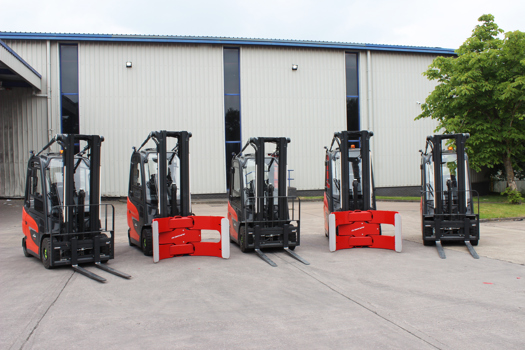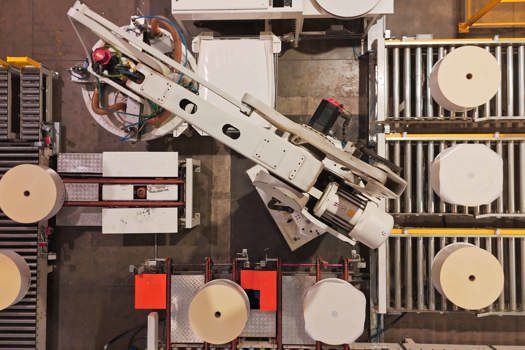Like most digital technology, thanks to the speed of development, the lifecycle of a digital press is short. At an average three to five years, it will last a fraction of its litho equivalent. The physical asset depreciates heavily, while the value is in the ‘click charge’: the consumables and service bundles from which the manufacturers derive the bulk of their revenues. From an asset finance perspective, the lack of market for secondhand presses and corresponding lack of resale value makes funding digital kit challenging at the best of times.
This is why ING’s decision to pull out of the UK asset finance market last month is so significant for print, because ING Lease UK was one of the last and largest funders of digital presses. Estimates have put its share of the £3.7bn brokered asset finance market at up to 45%, meaning a potential £1.7bn funding gap. If just 10% of that went to the print industry, that would equate to a £170m hole in UK print finance. To paraphrase a popular TV show: financing print doesn’t get tougher than this.
Other notable departures from the market for brokered asset finance in recent years include CIT, Lombard, HBOS, Hitachi, Fortis, HSBC and Lloyds. So who is left? Close Asset Finance remain the largest lender to the print industry, but it has always been a double-digit lender and it will be in the mid-market that ING’s exit will be most keenly felt. "In terms of prime lending for digital and CTP, Investec are one of the few left and it does need others to provide greater competition," says Compass Business Finance director Mark Nelson.
"There are plenty of others out there that will fund that sector, but they’re slightly higher rated and they take slightly higher risk. On transactions of up to £50,000, ING would take more of a commercial view in terms of whether they were prepared to lend that amount to that business rather than getting hung up on what the asset was and what its resale value would be."
The brokers are also bound to come under pressure. "The other huge problem, regardless as to whether or not you support finance brokers, is that ING has effectively joined the ranks of HSBC, Barclays, Lloyds and RBS in that these major sources of UK finance no longer take business from brokers," explains Finance in Partnership managing director Murray Booker.
One of the reasons ING was a favourite amongst the broker community, aside from the fact that it was willing to lend at "sensible terms" to fund digital, was its use of automated systems to speed the approval process. "They automated everything to the point where we could propose our own deals on their system. Everyone else has to do that manually, which – with the amount of business ING was writing – would probably mean employing an extra 10 people," says Nelson, adding that many of the smaller brokers will now struggle to access the funds they need. "They won’t have the range of funding lines needed to compete in the market. It’s likely that some of those companies will cease to trade and others will join larger broking companies to survive."
Digital problem
The bigger problem from a print perspective though will be in CTP and digital. "If ING tended to take a slightly more commercial view rather than the asset structure that the banks rigidly apply, that will definitely have a big impact on SMEs looking to invest in things like digital presses," says Deal Bureau director Gerry Hoare.
Booker adds: "Digital and CTP finance has always been a difficult area and ING’s departure will not make things any easier. The digital market needs a fundamentally new approach to lending." This is a view that is echoed by many in the sector, where there is a constant balancing act between wanting to lend to a major growth market and not wanting to get burnt fingers.
"A lot of digital equipment is financed on three- to five-year deals and if you have to repossess in the first two years, you’re potentially going to lose a lot of money," explains Print Finance managing director Paul Coggins. "We all want to support the market because it’s in our interests, but no-one is going to go out and lend heavily on assets that depreciate aggressively. If you bought a new Heidelberg for £1m and two years in it was worth £500,000, you would not be happy. Your business just could not sustain that level of depreciation."
So where does this leave the UK print industry? One more major bank exit away from becoming a completely polarised market, or might there be a glimmer of hope on the horizon? "I wouldn’t be surprised if we saw other funders widen their remit, to fill the void, by the end of the second quarter of next year," argues Nelson. "There’s definitely an opportunity for others to exploit that gap where before – with ING still active – they may have thought: what’s the point?"
Booker agrees that ING’s exit, while damaging, will prompt others to enlarge their books. "At this level of lending, it is extremely unlikely that any one lender will step up to fill the gap. As such, the business will over a period of time be dissipated to various other existing and possibly new lending sources," he says.
But Booker warns that regardless of what happens in the immediate aftermath of ING’s decision, the fundamental problem of financing digital remains. "There is no quick fix for the financing of digital kit. it involves the creation of a secondary market for the kit and ways to resolve problems with licences and suchlike when a piece of kit passes from one owner to another," he reveals, adding that HP is "probably the exception" that proves the rule.
"I have tried over the years to set something up," he says, "but in this climate, there is no chance."
30-SECOND BRIEFING
- Last month, ING Lease UK announced its decision to pull out of UK asset finance from 30 November, sparking concern for CTP and digital press finance, where it was the most active prime lender left in the market
- ING’s share of the £3.7bn UK brokered asset finance market has been estimated at up to £1.7bn. If just 10% of this was print-related that would leave a £170m funding gap for the industry
- Investec is the only other prime funder left accepting business from UK finance brokers, although there has been speculation that other funders might enter the market to fill the gap left by INGIn the meantime, printers may have to look to alternative funding options, including equity release, to finance investment, or work with higher rated lenders
- Regardless of who enters the market, there will be no "quick fix" for financing digital equipment as there is little or no secondary market for the equipment, with the possible exception of HP Indigo
READER REACTION Gerry Hoare
Gerry Hoare
Director, Deal Bureau
"It’s certainly not good for the market, although in the short term, I don’t think it will make a particular difference. The companies that are credit-worthy will continue to get the asset finance that they need. Longer term, it might make slightly more difference because it is one less company providing finance and every withdrawal results in less choice and makes it more difficult, particularly for smaller businesses that perhaps don’t have the strongest balance sheet." Murray Booker
Murray Booker
Managing director, Finance in Partnership
"There is no disguising the fact that ING’s exit is yet another devastating blow to brokers and the wider printing community. ING was a substantial operation with business sourced through the UK finance broker network and which accounted in total for around £1bn per year of asset-based business. Some of that business – although probably not the greater part – was print-related and this is therefore yet another setback for the industry." Mark Nelson
Mark Nelson
Director, Compass Business Finance
"There are other funders out there that will take a large part of that [middle] market so I don’t think it will have as big an impact to the end customer, as some have feared. Close and City will look to take up some of the slack, as will Compass, depending on the covenant and size of transaction. Then you’ve got Investec, who may well work with their brokers to fill the void, and they take a reasonably commercial view."
To read Print Finance's Paul Coggins' comment on this subject, click here










